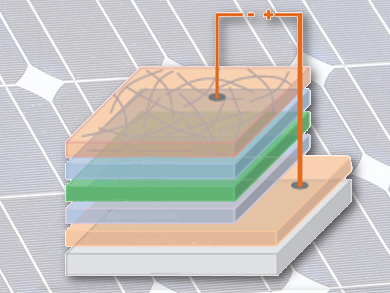Semitransparent organic photovoltaic (OPV) cells promise applications in various transparent devices, such as windows and translucent roof tops. A hurdle to commercial viability is the production of large-area modules that maintain high operation voltage to power output loads. Upscaling causes an inevitable decrease due to an increase of dead area, which does not contribute to the current generation, and due to resistance losses from interconnections.
Christoph J. Brabec, Friedrich-Alexander University of Erlangen-Nuremberg, Germany, and colleagues overcame these obstacles by using silver nano wires (AgNWs) as top electrodes in combination with ultrafast laser patterning and accurate positioning. This allows monolithic series-interconnections between individual modules, resulting in low-resistance contact of the interconnections as well as a reduced dead area.
The team is able to achieve a high electric factor of 63 % and an extremely high geometric fill factor of 95 % for OPV solar cells with an area of 64 cm2. Additionally, the process works on glass and on flexible polyethylene terephthalate (PET), broadening possiblities for practical applications of OPV cells.
- Nanowire Interconnects for Printed Large-Area Semitransparent Organic Photovoltaic Modules,
Fei Guo, Peter Kubis, Thomas Przybilla, Erdmann Spiecker, Andre Hollmann, Stefan Langner, Karen Forberich, Christoph J. Brabec,
Adv. Energy Mater. 2015.
DOI: 10.1002/aenm.201401779



